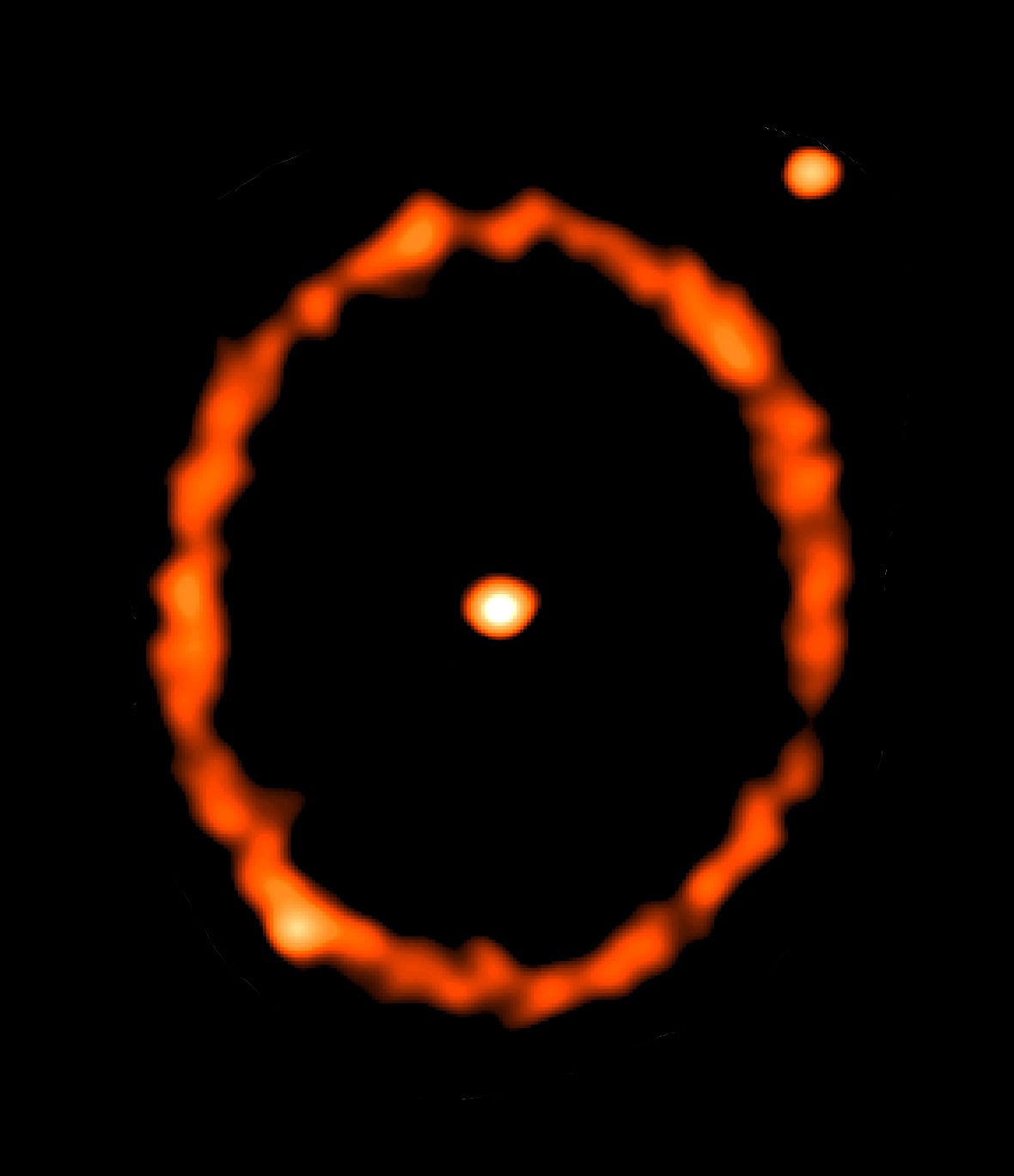
Humanity’s story of Epsilon (ε) Eridani (Ran) is a case of life imitating art. Shining at 4th magnitude, Epsilon Eridani lies only 10.5 light-years distant, making it the third closest naked-eye star. At 800 million years young, this Sun-like star is almost the same age as our solar system was when life first took root on Earth. Knowledge of this fact likely inspired science-fiction writers ever since the 1960s to imagine the star hosting habitable worlds.
Such imaginings started to enter the realm of reality in 1998, when astronomers revealed that the star is surrounded by a young belt of comets — similar to our solar system’s Kuiper Belt — whose more jagged appearance may be caused by a possible planet at its edge. These findings were followed by the discovery of a near-Jupiter-sized body (Epsilon Eridani b, orbiting with a period of 7.4 years at a distance 3.5 times that of Earth from the Sun) and two asteroid belts (one interior to the planet and one much farther out). The inner belt is at about the same location as the asteroid belt in our solar system, while the second lies around where Uranus orbits our Sun. The data also infer that an unconfirmed second planet may lie near the outer asteroid belt.
Epsilon Eridani, then, holds the distinction of being the closest planetary system around a star similar to the young Sun and is a prime location to research how planets form around Sun-like stars. And while its Jupiter-sized world may not have the conditions for life, any satellites orbiting it might.
It appears the science-fiction fever over Epsilon Eridani has not waned, as the star has been the target of SETI Institute searches, while some dreamers have suggested the star as a possible destination for future space travelers.









